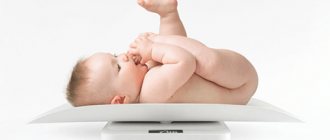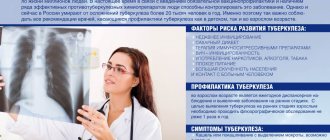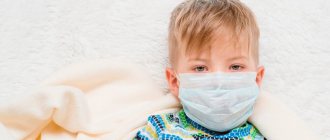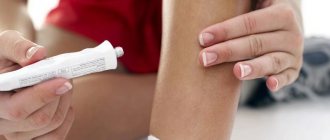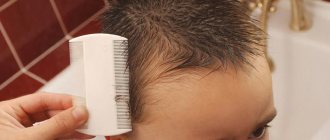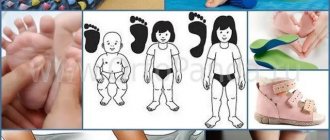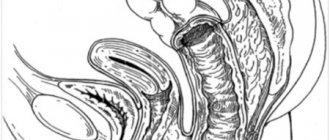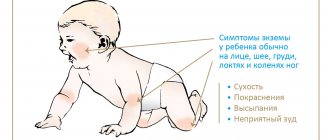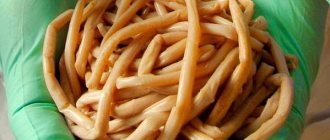What to do if your child has a fever? This question sooner or later arises in every parent who is concerned about the health of their child. But not all mothers and fathers know what temperature can and should be lowered. So, for example, in newborns and babies up to one year old the indicator is up to 37.5-38 degrees, which for us adults is considered elevated, and is the norm. The baby is one month old – does he have a fever? Reduce it only if it rises above 38-38.5.
As for older toddlers, for them this “threshold” is 39-39.5. If the thermometer shows a lower temperature, you should not knock it down. Remember that a child’s fever is an excellent opportunity for the body to fight the infection on its own. Give your baby the opportunity to boost his immunity!
How to reduce a child's temperature?
Now let’s talk about the medications that should definitely be in your first aid kit if a baby is growing up in the family. Thus, pediatricians prohibit the use of drugs such as:
- Aspirin;
- Analgin;
- Nise.
The baby can only be given medications that contain Paracetamol or Ibuprofen. Even if the child has no symptoms, they must be correctly calculated based on the baby’s weight and measured using a special syringe or measuring spoon. You should not use ordinary teaspoons for these purposes, and it is better to completely forget about the concept of “by eye”.
How to reduce a child's temperature?
Doctors advise using only one drug from the above - with Paracetamol or Ibuprofen in the composition. If the temperature drops poorly or does not drop at all, such medications can be alternated. But you can’t give your baby the combined drug Ibuklin.
Please note that it is not at all necessary to reduce the temperature to normal. It is enough just to knock it down a little for the baby’s well-being to improve at least a little. Don’t forget to feed your little one, because in case of high temperature the loss of fluid increases. Pediatricians say that babies need to drink 100 ml of water per 1 kg of weight.
What to do if your baby gets chickenpox?
Has your child caught chickenpox? Of course, this acute viral disease can also cause high fever. How to proceed in this case?
The most important thing is to choose an antipyretic drug for your baby. Under no circumstances should you use Nurofen. To combat high fever during chickenpox, medications containing Paracetamol are suitable.
What to do if your child has a fever?
Does your baby have a fever? Then you can’t hesitate - you need to urgently consult a doctor. Especially if it is accompanied by:
- rash;
- neck muscle tension;
- abdominal pain;
- vomiting.
But don’t panic: fever is typical for most common viral respiratory infections and high temperatures - about 40 degrees. This is how our body responds to infection. The pediatrician will simply examine the child and select the right treatment for him, taking into account the severity of the disease.
When to call a doctor urgently?
It is necessary to call an ambulance urgently in cases where the child’s life is in danger and, in addition to temperature, the following are observed:
- convulsions;
- increase in temperature after taking the medicine;
- no cold symptoms;
- painful sensations in the abdomen;
- changes in breathing (faster, more difficult, or slower);
- dehydration;
- diarrhea;
- vomit;
- drowsiness;
- hemorrhages throughout the body;
- rash;
- deterioration of condition.
Remember that paracetamol preparations are safer and can be used to reduce fever in children from one month onwards. Less aggressive effect on the stomach. Valid for no more than 4 hours. While ibuprofen is stronger and works for up to 8 hours, it can upset the stomach and affect blood clotting.
Contact your pediatrician if your baby's temperature rises. Do not neglect your child’s health by self-medicating.
What temperature should be lowered in a child with influenza and ARVI?
High temperature forces the child's body to turn on its protective function. In this case, there may be a general deterioration in the form of malaise and headaches. The child becomes lethargic and whiny, which brings a lot of anxiety to parents. Before bringing down a child’s high temperature, you need to clarify significant nuances.
A slight increase in temperature does not lead to serious consequences and does not require any measures to be taken. Parents need to have reliable information about what temperature should be lowered. Improper actions can cause weakened immunity. There is a risk of developing possible complications and the disease may become protracted.
Cases when you need to bring down the temperature in children:
- 37.2-37.9°C (low-grade fever) – should be taken for newborns up to 2 months of age if indicated;
- 38.0-38.9°C (febrile) – antipyretics must be given in all cases;
- over 41.0°C (hyperthermic) - you need to call an ambulance if the drugs do not lower the readings on the thermometer.
It is necessary to call an ambulance if febrile spasms appear - this is intolerance to high temperature, an individual feature of the child’s body. This condition usually does not occur in children over 6 years of age (provided there are no pathologies in the central nervous system).
Chronic or acute diseases in cardiology, neurology or lung disease require lowering the temperature in children if the readings are above 38°C. Otherwise, complications from the heart, nervous system and respiratory organs cannot be ruled out.
If you have difficulty lowering your temperature, you should immediately seek medical help. If the thermometer has barely reached 37°C, and the child looks lethargic and his health is only getting worse, you should not expect a further increase in the readings on the thermometer.
Why does the temperature rise
From an immunological point of view, an increase in body temperature is a protective reaction of the immune system aimed at eliminating the damaging factor and accelerating recovery1. Numerous studies have found that during periods of increased heat production in the body, the synthesis of specific chaperone proteins (the so-called “heat shock proteins”), which take an active part in the formation of the immune response, is activated.
In addition, under the influence of moderate fever, there is an increased production of interferon (a protein substance that blocks the proliferation of pathogenic viruses)1,3. With the development of an infectious-inflammatory process, the higher the thermometer rises, the more actively interferon is synthesized, which alone fights the infection. As a rule, its amount reaches maximum values 48–72 hours after the temperature rises.
Finally, an increase in temperature is a response to the negative effects of pathogens and their toxins1,2. For many infectious agents, in the presence of fever, the ability to reproduce is reduced, and for some of them, an increase in temperature to 38–39 degrees becomes fatal.
Up to contents
How to properly lower the temperature at home?
Effective folk ways to reduce fever without medications in children:
- A drink made from cranberries is a unique diaphoretic that reduces fever. The berry is useful for containing vitamins and accelerates the elimination of decay products.
- Chamomile tea is an excellent anti-inflammatory remedy. To prepare the infusion, pour a tablespoon of chamomile into a glass of boiling water, let it brew for 2 hours, drink up to 5 times a day.
- Elderberry decoction effectively helps reduce fever. It is enough to take 50 g of elderberry and pour boiling water (200 ml) over it.
- Linden tea – gives excellent results when consumed with honey. The child will sweat profusely, which will reduce body temperature due to the evaporation of excess moisture from the skin.
You can wipe the child's body with a terry towel moistened with water at room temperature. Applying a heating pad with ice to large vessels helps. Wrapping in a damp towel or sheet is also recommended.
The best and proven medicines for fever in infants and from 1, 2, 3 years old
What medicine is the most effective? Below you will find medications for children and their dosage.
Attention : before use, consult your doctor and read the instructions!
Paracetamol based
Paracetamol helps reduce temperature during acute respiratory viral infections, flu, otitis media, toothaches and teething, and colds. Has an analgesic effect. Suitable for babies from 3 months.
Contraindications are: newborns (up to 3 months), sensitivity to certain components, including flavoring agents. Careful use. If you have diabetes mellitus or a predisposition to it, kidney and liver diseases, hepatitis and Gilbert's syndrome.
In case of incompatibility, anemia, rash, itching, and angioedema occur. An overdose of the drug is accompanied by nausea, pale skin, vomiting, and lack of appetite.
Syrups and suspensions begin to act 20 minutes after entering the gastrointestinal tract. Rectal suppositories reduce the temperature after 40 minutes.
| A drug | Form | From what age? | Average price, rub. | Dosage | Number of times per day |
| Tsefekon D | candles | From 1 month | 55 |
| 2 -3 times |
| Calpol | syrup | From 3 months | 90 |
| After eating, 2 hours later, up to 3 times |
| Paracetamol | suspension | from 1 month | 50 – 55 |
| No more than 4 times before meals |
| syrup | From 3 months | 95 – 100 |
| No more than 3 or 4 times before meals | |
| Panadol | suspension | From 3 months | 95 – 100 |
| Up to 3 – 4 times |
| candles | From 3 months | 85 – 95 | Use 1 suppository rectally for children under 3 years of age. | Up to 3 times | |
| Efferalgan | syrup | From 1 month | 100 | The syrup is poured into a measuring spoon at the indicated stroke, equal to your child’s weight category. Follow the instructions strictly. | No more often than every 6 hours |
| candles | From 3 months | 113 |
| No more often than every 6 hours |
Ibuprofen based
Ibuprofen helps replace medications that contain paracetamol, which does not help people or causes allergies. Ibuprofen-based drugs reduce fever and have an analgesic effect. Relieves toothache, headache and other types of pain.
You should not use such medications if you have problems with the blood, kidneys, liver, or hearing. The presence of allergic rhinitis, asthma, urticaria, gastrointestinal ulcers are also contraindications.
If the medicine is not suitable, you can observe:
- pain in the stomach;
- rash;
- diarrhea;
- nausea;
- vomiting;
- dizziness;
- headache;
- frequent urge to urinate;
- leukopenia;
- anemia;
- insomnia;
- bronchospasm.
Symptoms of overdose: low blood pressure, tinnitus, vomiting, abdominal pain, headache.
| A drug | Form | From what age? | Average price, rub. | Dosage | How many times a day? |
| Ibufen | suspension | From 6 months | 85 – 90 | If t is below 39 C:
| Up to 4 times |
If t is above 39 C:
| Up to 2 times | ||||
| Nurofen for children | suspension | From 3 months | 115 |
| 3 or 4 times |
| candles | From 3 months | 95 |
| 3 times | |
| 4 times | ||||
| Motrin for children | suspension | From 6 months (as prescribed by a doctor) |
| Up to 4 times | |
| 3 times | ||||
| 3 times |
Homeopathic medicines
Alternative medications for fever and pain include the homeopathic drug Viburkol. It has many components to provide antipyretic, analgesic and anti-inflammatory effects. Used during the treatment of respiratory diseases.
Available in the form of suppositories for rectal administration. Store in a cool place. The ideal temperature is 15 – 20 C.
Candles can be used during teething. The components relieve discomfort and pain. Opinions differ on whether the vaccine after vaccination is effective or not. Effectiveness is observed in children under one year of age.
| A drug | Form | From what age? | Average price, rub. | Dosage | How many times a day? |
| Viburkol | candles | From 1 month | Up to 6 months - 1 PC. | 2 times | |
| From 6 months - 1 PC. | 4 times (37.5); 6 times (38) |
Photo: Antipyretics for high fever in children
Medications
Before lowering your child’s temperature at home with medications, you must carefully study the instructions for use. Classic drugs can be bought in pharmacies, choose the dosage and form that is needed and choose the best option depending on age and indications.
The baby can only be given medications that contain paracetamol or ibuprofen. Paracetamol is contained in Panadol and Cefekon, ibuprofen is found in Nurofen and Ibufen. For babies, these products are available in the form of syrup, which, unlike tablets, has a sweet taste and is more convenient to dose.
Standard antipyretic drugs:
- "Panadol". Suitable for use on infants. The drug is indicated for colds, teething, otitis media, whooping cough and other infections. Prescribed to children aged 3 months and older in an individual dosage.
- "Efferalgan." Used as an analgesic and antipyretic. Rectal suppositories can be used to relieve fever in infants 3 months and older. Unlike medications taken orally, it does not cause vomiting and does not affect the gastrointestinal tract.
- "Ibufen." Has analgesic and antipyretic properties. In childhood, this drug is used in a dosage calculated depending on the weight and age of the child.
- "Paracetamol". An effective antipyretic and analgesic. It can be alternated with ibuprofen. If there is vomiting, you can use suppositories (suppositories).
- "Cefekon D". Available in the form of suppositories, recommended for use from 3 months to 12 years. Important advantages of the drug are its low cost and versatility. In addition to reducing temperature, it has an anti-inflammatory and analgesic effect.
A child's body can react to different medications differently, so you should experiment in practice to determine a more effective remedy, based on the pediatrician's recommendations.
When taking medications, you should follow a number of rules:
1. You cannot give several medications at the same time.
2. Drugs can be alternated, but the interval between taking medications should be 2-3 hours.
3. It is recommended to dose syrups using a measuring spoon or syringe, which are included in the kit.
4. If a child 1 year or younger is sick, it is recommended to use suppositories. Older children take tablets and capsules easily. Without a doctor's recommendation, antipyretic drugs can be prescribed to children for no longer than 3 days in a row and no more than 4 times a day.
5. Parents must understand that high body temperature is just a symptom indicating a specific disease. Taking antipyretics is not a treatment; it is only necessary to alleviate the child’s condition before the doctor arrives.
FAQ
At what temperature should antipyretics be given?
Pediatricians do not recommend lowering the temperature if it is below 38 - 38.5 ° C, and the baby’s condition does not suffer. If, against the background of fever, there is body aches, headache, pallor and coldness of the extremities, then it makes sense to give the child an antipyretic, regardless of the temperature level. If convulsions occur, you should definitely call an ambulance.
How often can you give your child antipyretics?
Ibuprofen-based antipyretics are used at intervals of ~4-6 hours; for paracetamol, the period between doses is about 12 hours. Duration of admission - no more than 3 days.
What should I do if my child vomits after taking it?
If a child vomits immediately after taking an antipyretic orally, this may be either a reaction to the taste of the drug or vomiting due to fever. In such cases, candles can be used. If the temperature does not decrease after suppositories, and vomiting continues, you need to call a doctor.
Ask your question
What should you not give to children?
Reducing a child’s temperature is not difficult - today there are many drugs on sale that relieve fever in a short time. But first you need to consult with a qualified pediatrician, because self-medication can affect the baby's health.
If the readings do not exceed 38.5°C, there is no need to lower the temperature, because The body independently produces antibodies that help destroy viruses - so to speak, it fights the infection.
Medicines that are not recommended for children:
- amidopyrine, antipyrine and phenacetin (many side effects);
- acetylsalicylic acid (reduce the number of platelets, causing bleeding, allergic reactions, etc.);
- analgin and other drugs containing metamizole sodium as an active substance (side effects occur, such as suppression of hematopoiesis, severe allergic reactions, etc.).
These drugs are not recommended for use without the advice of a doctor. When you need to bring down the temperature, give preference to another medicine.
Is homeopathy necessary?
{banner_banstat5}
In pediatric practice, homeopathy has the right to exist because of its safety, first of all. But there is another undeniable advantage of this group of drugs. Homeopathic medicines do not a priori lower the temperature, but activate the body’s defenses. After taking two or three correctly selected doses, the temperature goes away. Of course, you need to consult your doctor, since each drug has its own characteristics. Here are some examples:
- Aconite stops fever at an early stage of its development, if the temperature rises sharply, the disease progresses intensively, the drug simultaneously relieves anxiety and restlessness;
- Belladonna is necessary at a temperature that is accompanied by delirium, redness of the face, cold feet - sore throat, otitis media;
- Ferrum phosphoricum is used at the very beginning of the disease, when it is clear that there is inflammation, but there are still no symptoms to clarify the localization of the process, the temperature creeps up slowly, the face is either pale or with red spots, the baby behaves restlessly: with purulent sore throat, such a drug is not will help;
- Pulsatilla is a fever medicine for capricious children; the main property of the medicine is the ability to calm children, relieving stress hyperthermia.
Taking homeopathic medicines is special. It is better to give one grain at a time, which needs to be absorbed. Up to 3 years, the medicine is dissolved in water (a couple of granules per glass of water). The first 3 doses are taken every couple of hours, after improvement - less often. If fever returns after discontinuation of the drug, treatment should be continued.
If there is no result from taking three doses, the drug is changed. If the temperature does not fall below 39°C or remains at low-grade levels for more than 5 days, you must call a doctor. This is especially true for newborns. Antipyretic therapy should be carried out against the background of treatment of the underlying pathology that caused the fever.
Is it necessary to bring down a child’s temperature to 36.6?
If, after using antipyretics, the readings decrease by 0.5°C within an hour, then the process is normal. Do not aim to reach 36.6°C immediately. This can cause serious overload of the child’s body, which can lead to a deterioration in overall well-being.
The ideal temperature would be 37-37.5 degrees. After some time, a jump may occur again. This occurs because the active component of the medicine is excreted from the body and ceases its effect. If several hours have passed after taking the drug, you can give the child another dose. It is very important to observe time intervals between doses and monitor temperature readings.
With an effective fight of the immune system against pathogenic microbes and with a competent approach to treatment, recovery, as a rule, is 3-5 days.
How to help a child’s body fight infection?
Regardless of whether you follow the recommendations on what temperature to lower in children, you must take care to create the necessary conditions for the patient. All family members should improve the quality of personal hygiene: wash their hands, wear disposable gauze bandages, etc. You also need to provide the child with separate cutlery and dishes.
Recommendations for a speedy recovery:
1. A sick child must remain in bed.
2. It is necessary to ventilate the room in which the baby is located (the influenza virus and other microorganisms are concentrated in musty air).
3. Care should be taken to humidify the air (at the same time, the mucous membranes of the nose and larynx do not dry out; this improves local immunity and promotes well-being).
4. You should ensure that you drink plenty of fluids (virus breakdown products are eliminated through the kidneys, which reduces the load on the body).
5. The baby’s clothes should be light, preferably made from natural fabrics.
6. It is considered normal for a baby to have no appetite. You should avoid spices, citrus fruits, and dairy products, which can cause irritation of the gastric mucosa. A hot bath at a high temperature is not the most pleasant feeling, but cool (not cold) water can help normalize the indicators.
7. It is recommended to use the bath together with antipyretics, and not instead of them. You can also get some relief by applying a cool compress to your forehead.
Literature
{banner_banstat6}
- Yewale VN, Dharmapalan D. Promoting appropriate use of drugs in children // Int J Pediatr. 2012; 2012: 906570. Epub 2012 May 8.
- Allan GM, Ivers N., Shevchuk Y. T reatment of pediatric fever: Are acetaminophen and ibuprofen equivalent? // Can Fam Physician. 2010, Aug; 56(8):773.
- Sullivan JE, Farrar HC Fever and antipyretic use in children // Pediatrics. 2011, Mar; 127(3):580–587.
- Zakharova I.N., Zaplatnikov A.L., Tvorogova T.M., Machneva E.B. Pediatricians – about febrile conditions in children: what you need to know and be able to do. Text of a scientific article in the specialty “Fundamental Medicine”/216.
- Baranov A.A., Tatochenko V.K., Bakradze M.D. Feverish syndromes in children. Recommendations for diagnosis and treatment. M., 2011.



